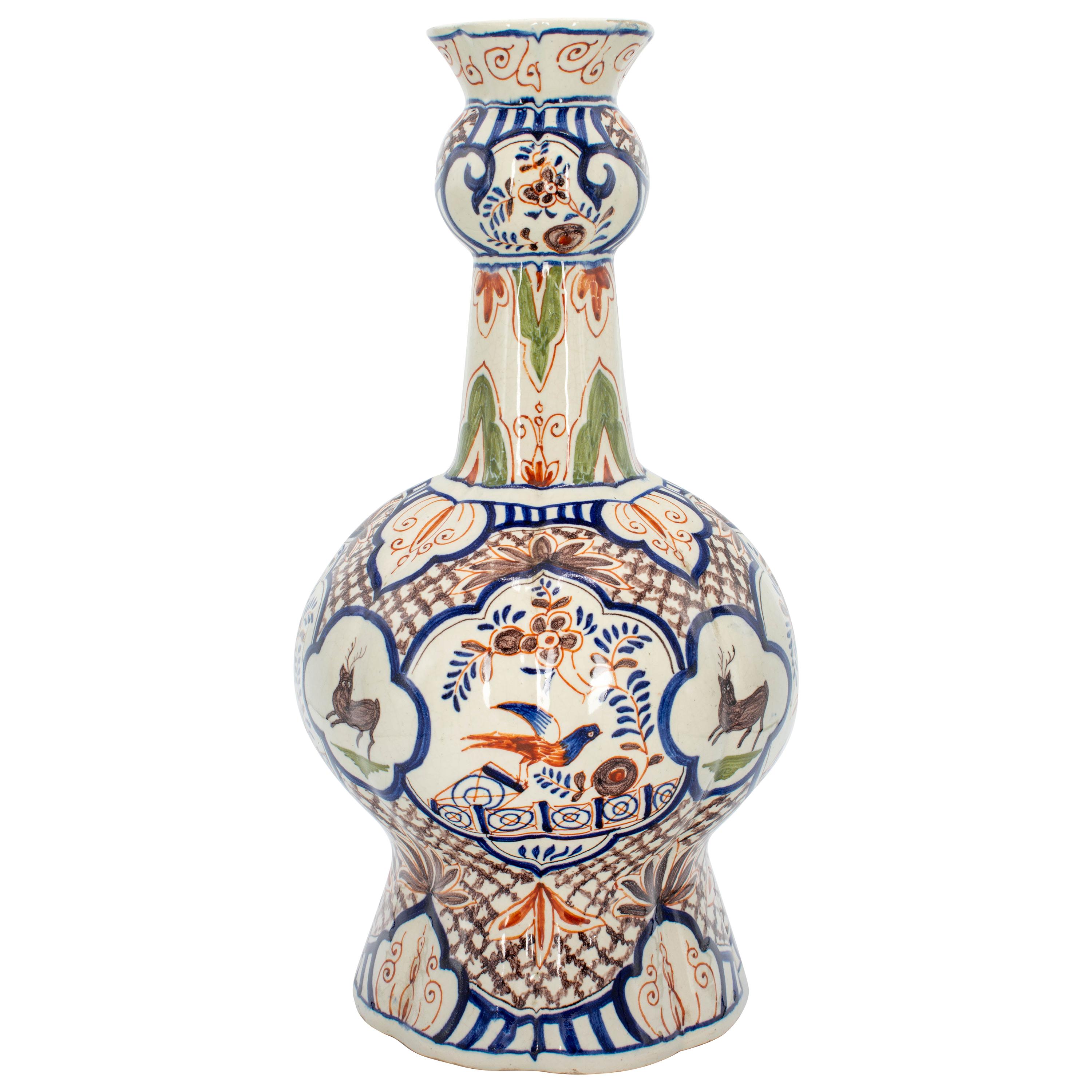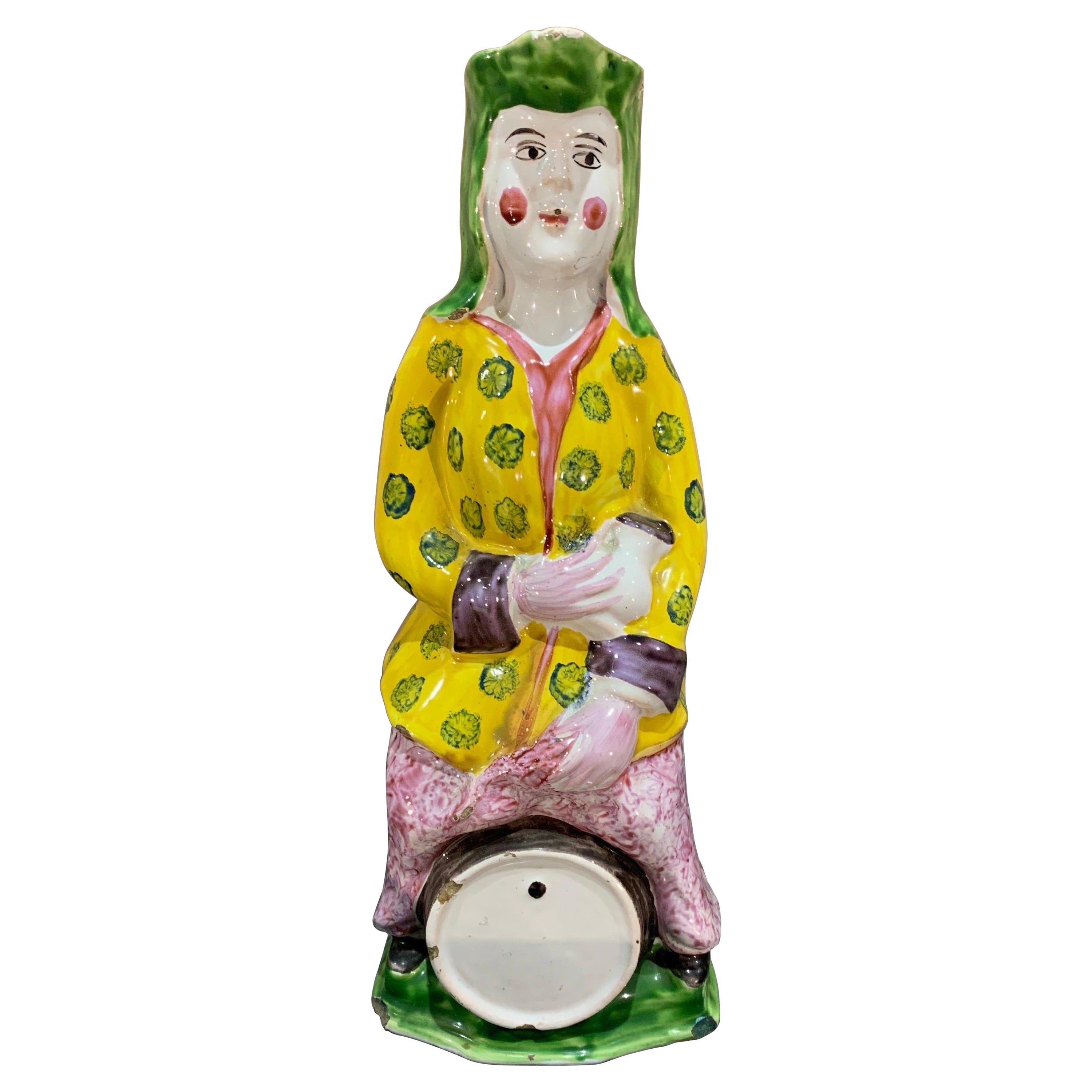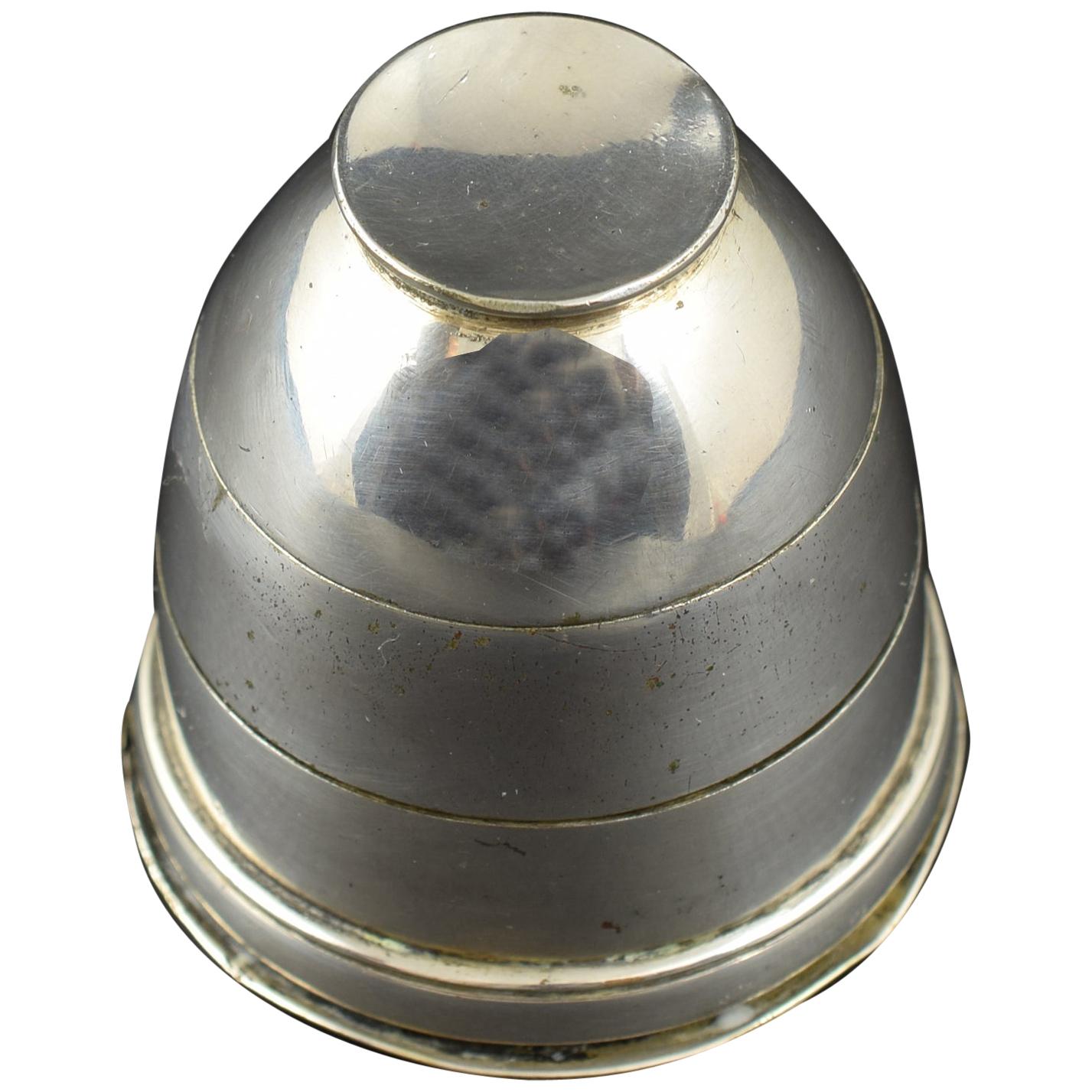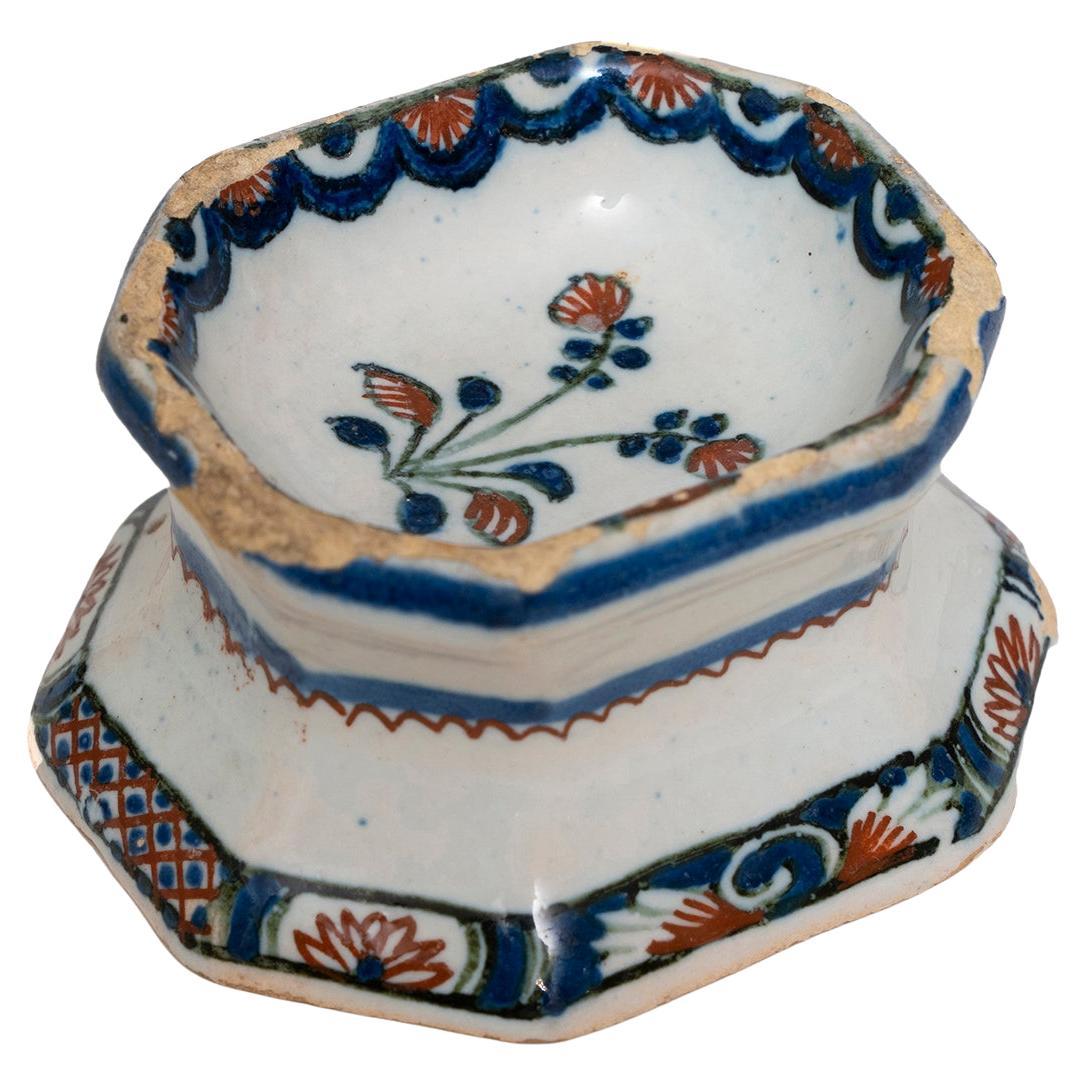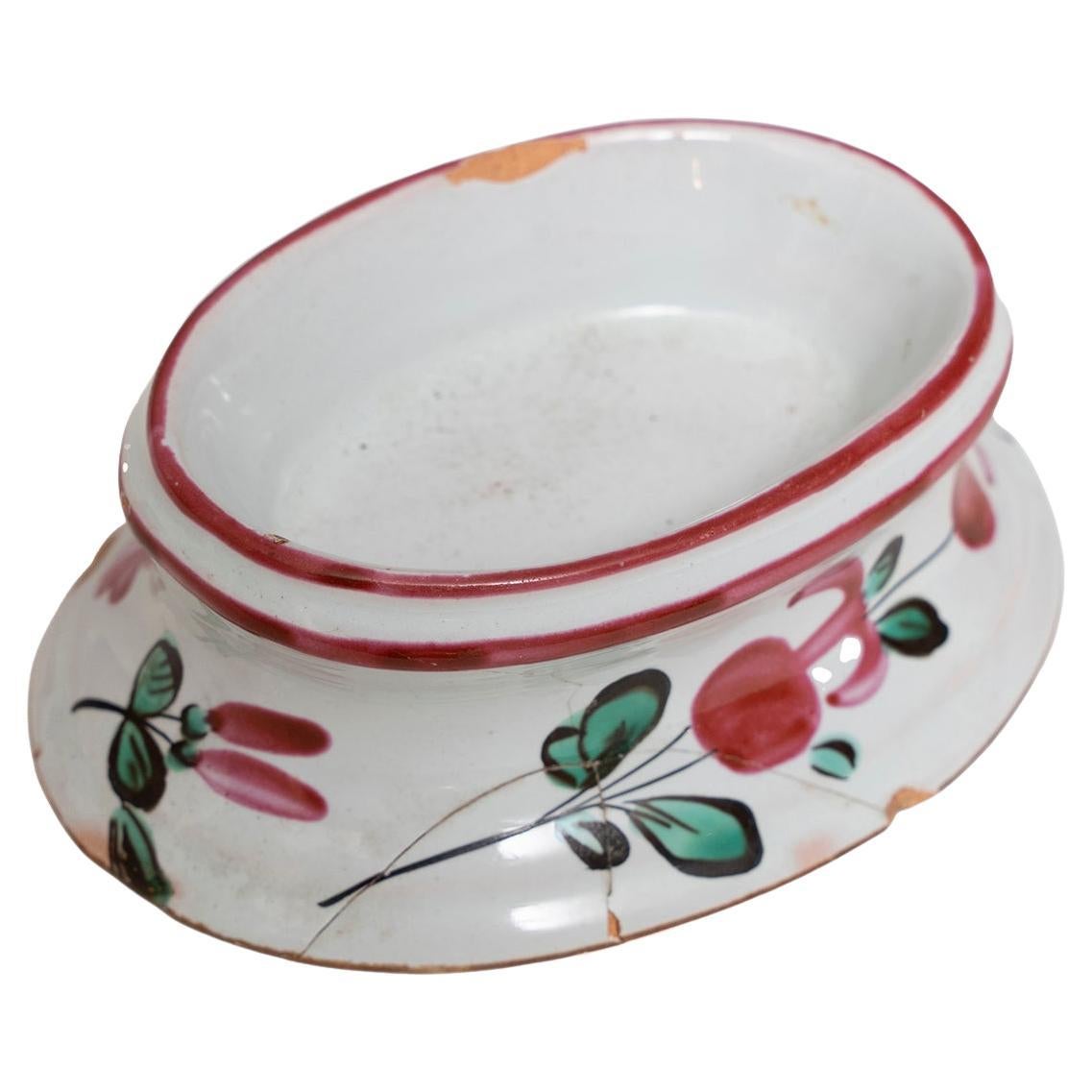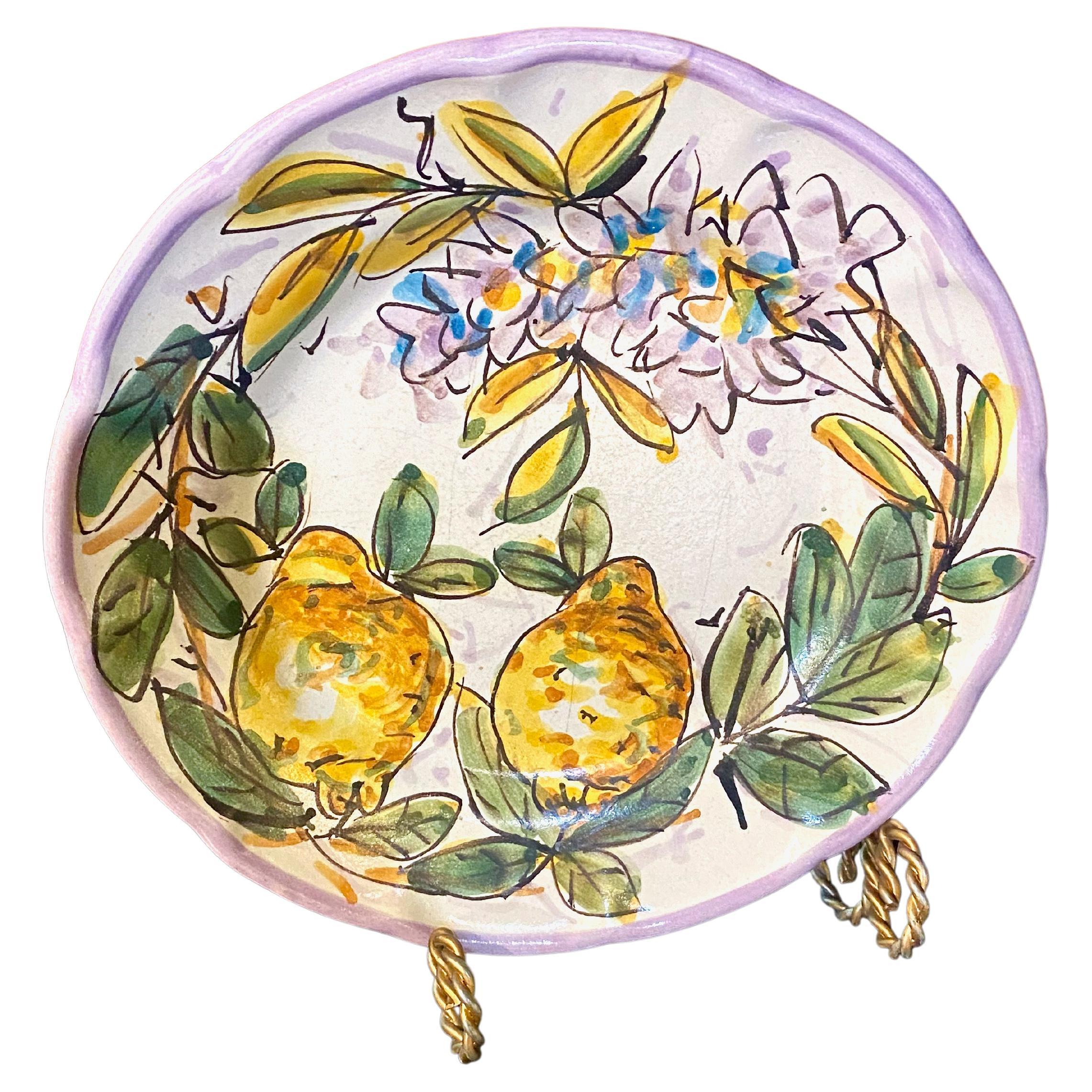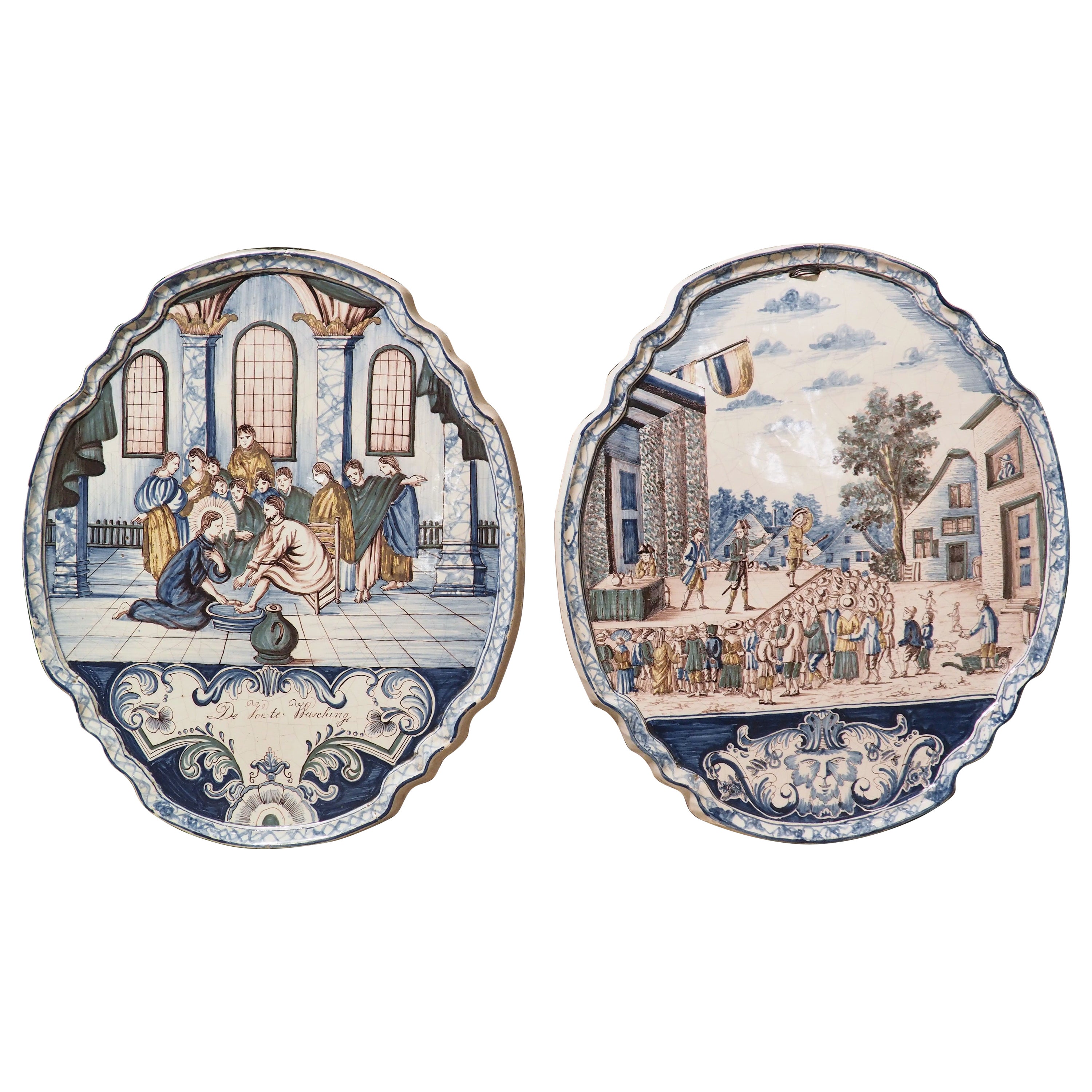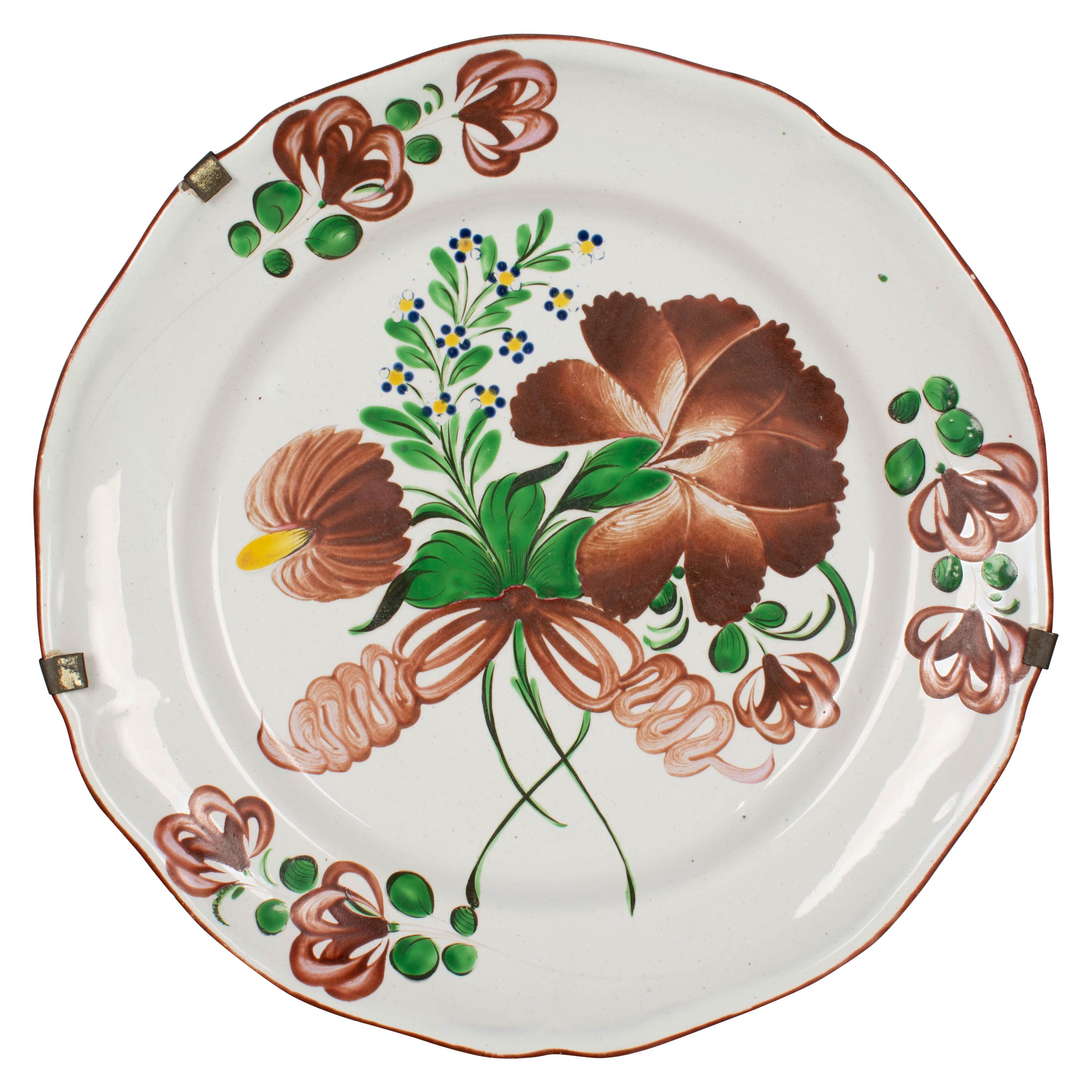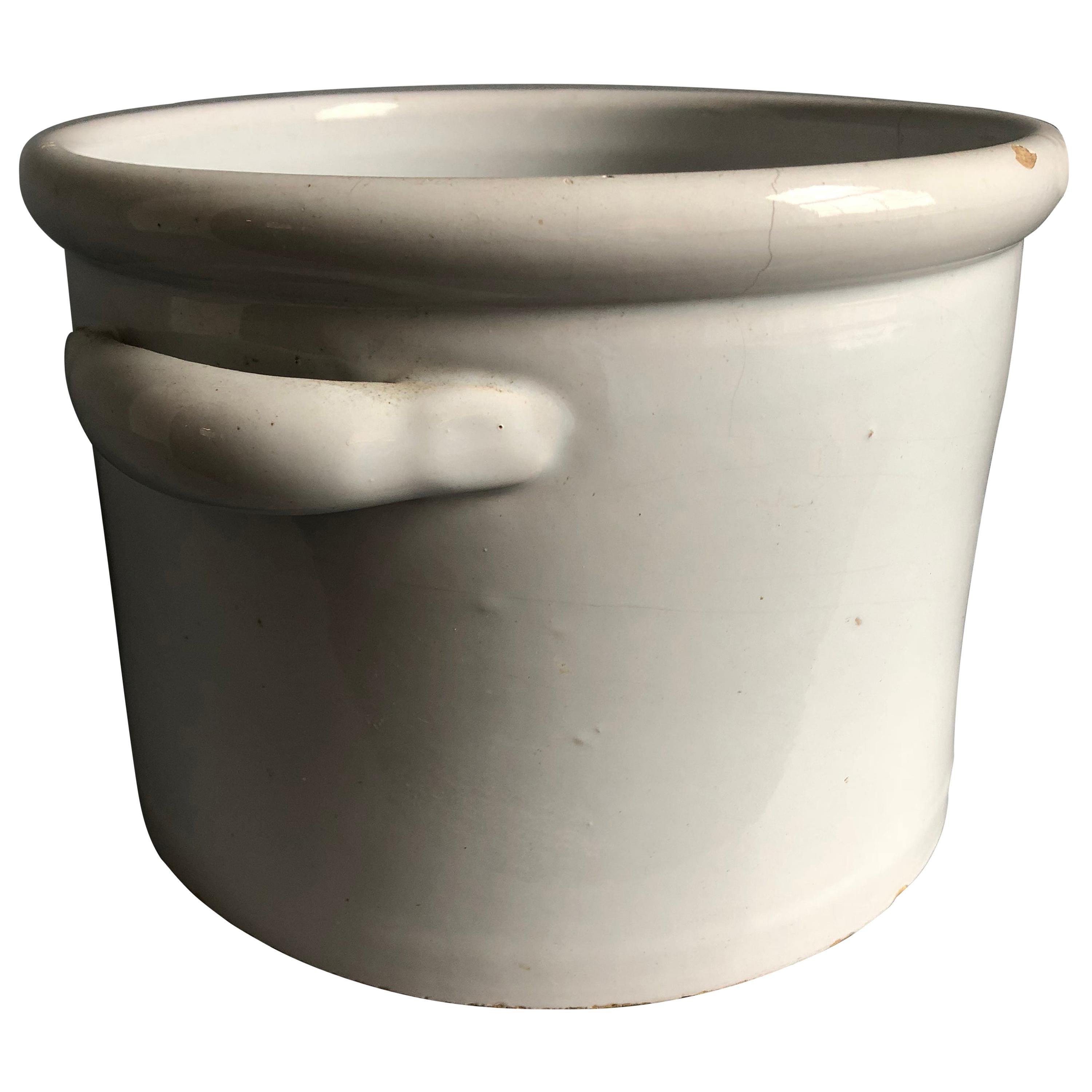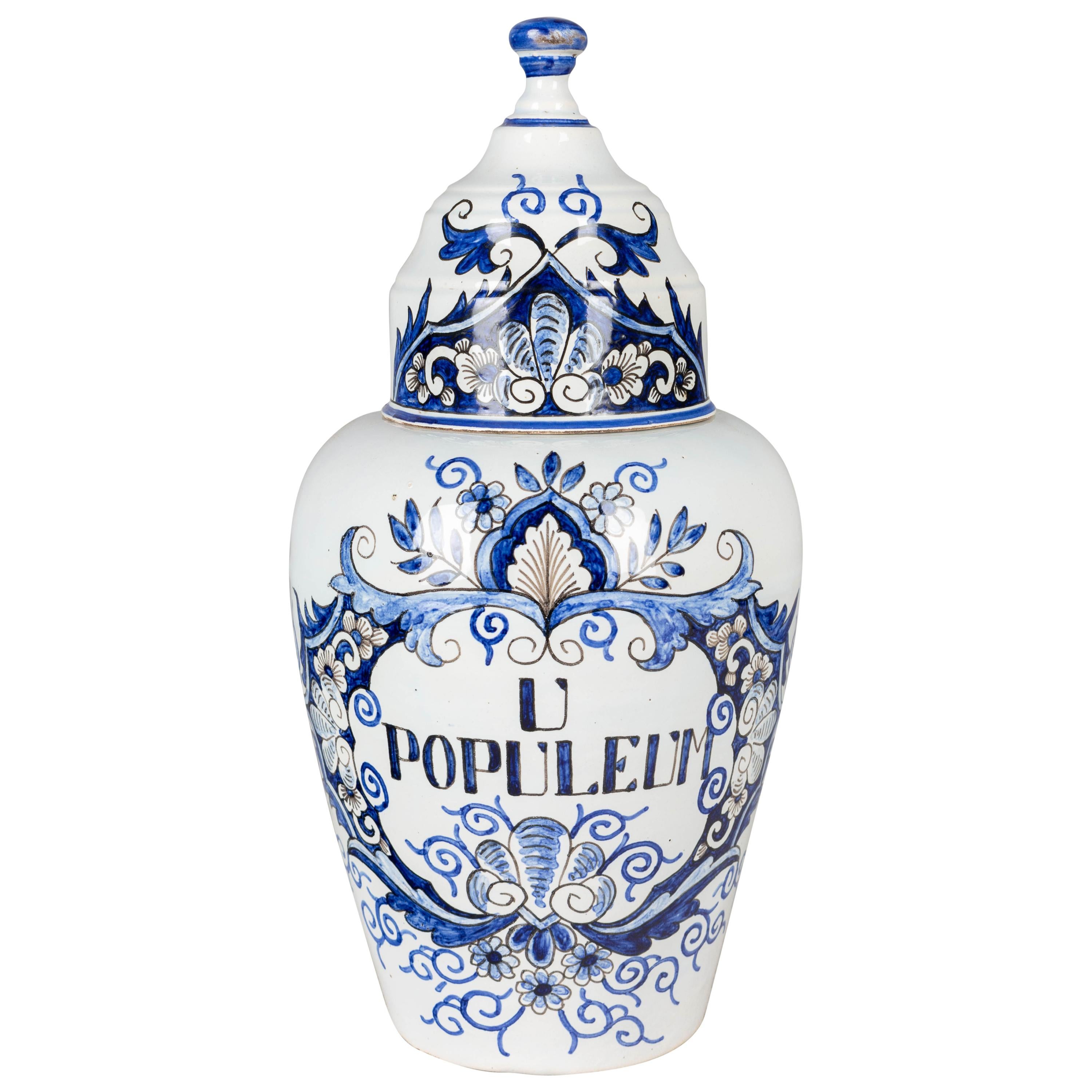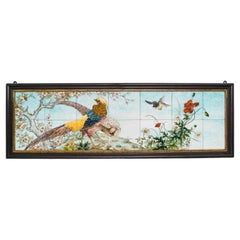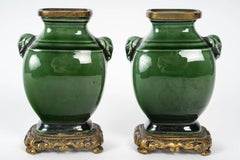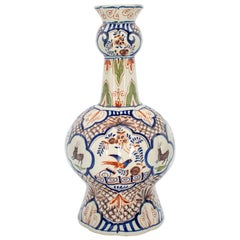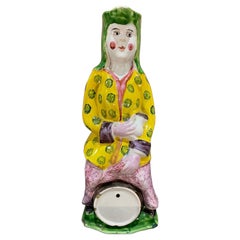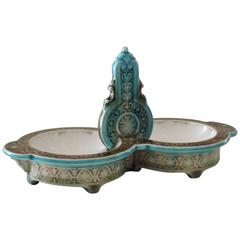
19th Century Théodore Deck Polychrome Faience Salt Cellar
View Similar Items
Want more images or videos?
Request additional images or videos from the seller
1 of 8
19th Century Théodore Deck Polychrome Faience Salt Cellar
About the Item
- Creator:Theodore Deck (Maker)
- Dimensions:Height: 2.76 in (7 cm)Width: 5.91 in (15 cm)Depth: 2.76 in (7 cm)
- Materials and Techniques:
- Place of Origin:
- Period:
- Date of Manufacture:circa 1880
- Condition:
- Seller Location:Saint-Ouen, FR
- Reference Number:1stDibs: LU261237927353
About the Seller
4.9
Vetted Seller
These experienced sellers undergo a comprehensive evaluation by our team of in-house experts.
1stDibs seller since 2017
56 sales on 1stDibs
Typical response time: 1 hour
More From This SellerView All
- A Théodore Deck (1823-1891) Enamelled Faience Soliflore Vase circa 1875By Theodore DeckLocated in Saint-Ouen, FRThéodore DECK (1823-1891) A polychromatic enamelled earthenware soliflore and quadrangular shape vase with Sino-Japanese inspiration design of flowers and geometrical friezes all around. Impressed uppercase mark "TH.DECK" under the base. Circa 1875 Born in Guebwiller in Alsace, Théodore Deck trained as a ceramist in his home region, then in Germany. He went into partnership with his brother, Xavier Deck, to create his own factory in Paris in 1858. At the Exhibition of Industrial Arts in 1864, he presented pieces covered with transparent enamels that were not cracked, and then made his first attempts at reliefs under transparent enamels. He developed a bright turquoise color, famously renowned as "Bleu Deck". It is this nuance that we find on the salamander represented on this vase. In 1887 he published a treatise entitled "La Faïence", in which he explained some of his discoveries. That same year, he became director of the Manufacture de Sèvres. Theodore Deck (1823-1891) is a French ceramist born in Guebwiller in Alsace. He is passionate about chemistry and the physical sciences. In 1841, he joined the master stove maker Hügelin father as an apprentice in Strasbourg. In two years, he learned of the methods inherited from the 16th century, such as the encrustation of colored pastes in the style of Saint-Porchaire. This apprenticeship did not prevent him from spending his free time draw-ing or modeling clay in the studio of sculptor André Friederich. Escaping military service, he made a tour of Germany as is the tradition with fellow Alsatian stove-makers. The quality of his work allows him to obtain important orders in Austria for the castles of the provinces and the imperial palaces, in particular for the palace of Schönbrunn. He continues his journey in Hungary to Pest, to Prague, then, going north through Dresden, Leipzig, Berlin and Hamburg. On the strength of his apprenticeship, he arrived in Paris in 1847. Recommended by Hügelin, he went to the stove factory of the Bavarian potter Vogt, located rue de la Roquette. The Revolution of 1848 interrupts production and Deck decides to return to his hometown. His family then advised him to set up a small terracotta workshop: he made a few busts, statuettes, vases, lamps and copies of famous antiques there. Aware that this situation would not allow him to provide for himself properly, he returned to Paris in 1851 where he was employed by the widow Dumas, daughter of the earthenware maker Vogt for whom he had worked. Hired as a foreman, he supplied the drawings and models to the workers, while working the land himself. The following year, he made the decision to settle not far from his former employer at 20, rue de la Fontaine-au-Roi, probably using his ovens. His brother, Xavier Deck, joins him. It was officially in 1858 that the Deck brothers created their business and settled in Paris at 46, boulevard Saint-Jacques. Initially, the brothers only carry out coatings for stoves. But the business is going so well that barely a year after their installation, they want to diversify their production and engage in ceramics for the cladding of buildings as well as in shaped parts. Deck is interested in politics. In 1870, he opted for French nationality and was elect-ed deputy mayor in the 15th arrondissement of Paris. In 1861, at the Salon des arts et industries de Paris, which was held on the Champs-Élysées, Théodore Deck exhibited his works for the first time: these were pieces with an inlay decoration called “Henri II” and others. pieces covered with turquoise blue enamel or decoration in the style of Iznik ceramics.If he wins a silver medal, reviews are mixed, however. The following year, on the occasion of the Universal Exhibition of 1862 in London, he won over English customers. He surprised by presenting, like the previous year, his Alhambra Vase...Category
Antique 1870s French Japonisme Vases
MaterialsFaience
$4,739 Sale Price30% Off - Théodore Deck (1823-1891) Faience Paneled Fourteen-Tile Rectangular Wall PlaquBy Theodore DeckLocated in Saint-Ouen, FRA Théodore Deck (1823-1891) Faience Paneled Fourteen-Tile Rectangular Wall Plaque Polychromic Earthenware very finely hand-painted, designed with a couple of pheasants among vegetat...Category
Antique 1870s French Japonisme Decorative Art
MaterialsFaience, Wood
- Théodore Deck (1823-1891), Miniature Pair of Faience Vases circa 1870By Theodore DeckLocated in Saint-Ouen, FRTheodore Deck (1823-1891) A deep green enameled faience miniature pair of vases molded in the Chinese Archaistic Taste. Coves in the shape of elepha...Category
Antique 1870s French Chinoiserie Vases
MaterialsFaience
- French 19th Century Neogothic InkwellLocated in Saint-Ouen, FRDiana the Huntress A Louis Philippe Neo-Gothic Style Ormolu Inkwell Rectangular in brown patina bronze and gilt bronze. The tier presents in its center a statuette of Diana the ...Category
Antique 1850s French Napoleon III Inkwells
MaterialsBronze, Ormolu
- 19th Century French Lacquered Wood ChandelierLocated in Saint-Ouen, FRA 19th century French polychromed lacquered wood eight-light chandelier Lacquered gloss cream wood with green, red and brown highlights Contained vase ending in foliated seed welcoming eight arms forming semicircles. The top has a frieze of red flowers in green interlacing and is topped with leaves and a painted egg cream...Category
Antique 1890s French Louis XVI Chandeliers and Pendants
MaterialsWood
$5,733 Sale Price30% Off - French 19th Century Restauration Psyche Coiffeuse MirrorLocated in Saint-Ouen, FRA French 19th Century Restauration Psyche Coiffeuse mirror Patinated and gilt bronze rectangular Psyche Coiffeuse Mirror designed with Greek frieze, palmettes, oves, strings of p...Category
Antique 1820s French Restauration Table Mirrors
MaterialsBronze
You May Also Like
- 19th Century Delft Polychrome Faience VaseLocated in Winter Park, FLA 19th century delft faience polychrome painted vase with round body and narrow neck ending in an open bulb. Beautifully decorated in blue, orange, brown and green with large medalli...Category
Antique 19th Century Dutch Chinoiserie Delft and Faience
MaterialsFaience
$960 Sale Price41% Off - 19th Century Polychrome French Faience Wine DecanterLocated in Charleston, SC19th century polychrome French faiance wine decanter.Category
Antique 19th Century French Jars
MaterialsEarthenware
$1,840 Sale Price20% Off - Three-Part Silver Salt Shaker or Cellar, 19th CenturyLocated in Madrid, ESThree-part silver salt Shaker, 19th century. Salt Shaker made up of three bodies lowered at their edges so that they fit together and unite in a chamfered half oval at the top, deco...Category
Antique 19th Century European Neoclassical More Dining and Entertaining
MaterialsSilver
- Salt Cellar Faience French Octagonal Blue Red Green WhiteLocated in BUNGAY, SUFFOLKA charming piece of history for the dining table. The inside with an elegant, central floral spray and a floral border. the base decorated with blue lines and a bottom border of s...Category
Antique 18th Century French Chinoiserie Delft and Faience
MaterialsFaience
- Salt Cellar Dish Faience French Rose Green White FlowersLocated in BUNGAY, SUFFOLKRare surviving small piece of early tableware. Suitable for everyday use as a charming piece of history for the dining table. two red bands around the top. the base decorated with...Category
Antique 18th Century French Chinoiserie Ceramics
MaterialsEarthenware
- Italian Faience Side/Salad PlatesLocated in Pasadena, CAThis is superb set of 10 faience "Vietri" Italy hand painted side or salad plates. The plates were painted and signed by Romolo Apicella. We believe that ...Category
Mid-20th Century Italian Bohemian Delft and Faience
MaterialsFaience, Majolica
$1,075 / set
Recently Viewed
View AllMore Ways To Browse
19th Century Salt Cellars
Silver French Salt Cellar
Blue And White Dutch Porcelain
White Faience Pottery
French Breton Furniture
17th Century Blue Delft
Silver Plated Dutch
Three Faience
18th Century French Faience
18th French Faience
Faience Bird
Antique Delft Blue Pottery
Blue And White French Faience
Delft Covered
French 17th Century Silver
Delft Sign
Faience Fine
Tin Pot
